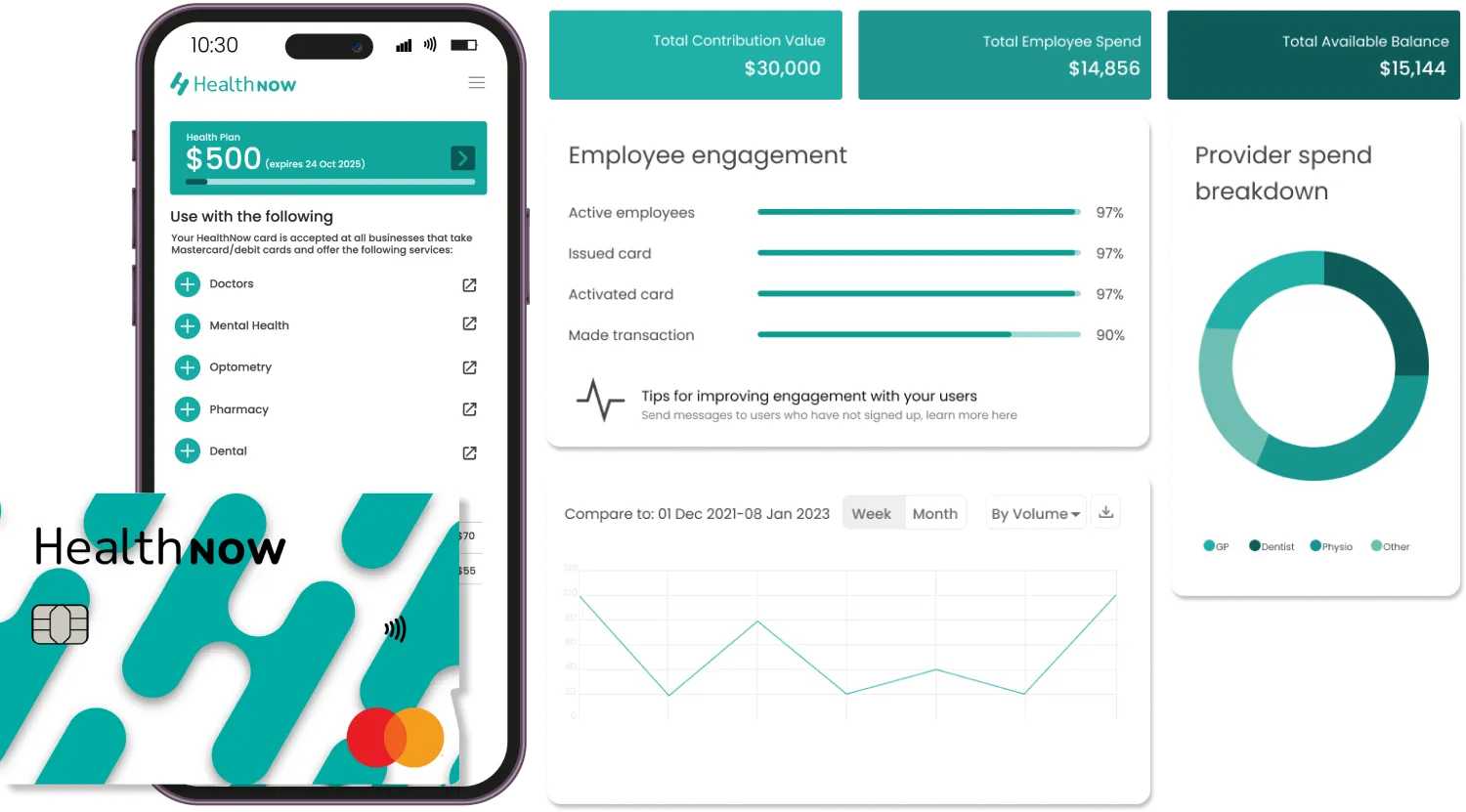Global events over the past several years have forced a significant shift in how businesses operate worldwide, and New Zealand is no exception. And it’s not just the business or the clinic owners that have had to change their processes – these unique circumstances have also shifted the working landscape from the perspective of the employee, too.
While some companies may have been hoping for a ‘business as usual’ approach to 2022, changing priorities mean that what previously worked to keep your employees happy may no longer fit the bill. Let’s look at what’s changed, the research behind it according to Harvard’s Business Review and other sources, and five ways that you can help improve employee satisfaction – and in turn retention rates and productivity – in 2022.
1. Embrace Equitable Flexibility
Embracing equitable flexibility has two key components: equity (ie fairness), and flexibility. With regards to flexibility, almost 65% of employees have said that flexible scheduling and remote work options will improve their experience and loyalty. Most of us have seen and felt the significant shift to a more flexible and hybrid workforce across many organisations and industries, meaning that this offering has somewhat become expected, as opposed to being a differentiating factor for the business. While the client-facing aspects of the healthcare industry can limit] the practicality of employees working from home on a regular basis, strategies that clinics are adapting include:
- Scheduling duties in each role that can be done effectively while working remotely for dedicated days of the week – e.g. letters, notes, reports, referral relationship building, professional development, business development
- Communicating the percentage of time a person’s role must be on-site, and when there is an option to work from home
- Implementing telehealth and video-health options
Moreover, with 47% of New Zealand families having one or more parents with at least one child under the age of 18 years, employees now need greater flexibility to care for children when they are unwell or are following their schools or daycares COVID-management ‘stay home’ policies which require children with as little as a runny nose to stay home. Simply put, those who are able to confidently retain a degree of flexibility to care for themselves or their families, without feeling guilty for asking or a burden to the team, will maintain a higher level of satisfaction with their role.
With regards to equity, both equity and fairness have become an open, ongoing discussion across workplaces, with the frequency with which CEOs talk about issues of equity, fairness and inclusion on S&P earnings calls having increased by 658% since 2018. With these prominent topics having moved from a place of ‘thought leadership’ to everyday discussions and acknowledgements, one shift improving employee satisfaction is moving from flexible working conditions being ‘assessed on a case-by-case basis’ or being available ‘under certain conditions, to openly clarifying your company’s policy around flexibility, regardless of personal circumstances, family or relationship statuses, and more.
2. Review Your Automations, Systems, And Onboarding Processes
Many clinics already leverage the great deal of benefits that automating your workflow can bring – saving time, improving productivity, and eliminating some repetitive and mundane tasks. However, a review of tech products and services found that 60% of workers said new software had occasionally or frequently frustrated them within the past 24 months, and 56% of users said new software had made them wish management would bring the old system back. So with this, comes a few questions:
- Do you have a concise onboarding process for new systems and automations that makes it clear and concise for your team to use the software and answers all of their questions?
- Have you sent your team a feedback survey asking them to highlight any difficulties, frustrations or suggestions for improvement on the software, including anything that is making their life harder?
- Do they have any suggestions of other ways to use automation or software to improve their efficiency at work? E.g. medical dictation software as opposed to manually writing letters, finding a more efficient way to upload physical patient documents
By taking their feedback on board and helping your team get the most out of your systems and processes, you can reduce the amount of cumbersome tasks in their schedule and improve their day-to-day satisfaction.
3. Prioritise Time For Relationships, Communication And Engagement
Employees’ working relationships were long determined to be crucial to their overall wellbeing and performance ratings at work. A study examining the impact of high-quality workplace relationships in nurses showed the presence of these relationships to be linked to higher commitment levels, lower levels of job stress, and increased perception of social impact. Notably, the results also demonstrated that relationships between leaders and their staff nurses make a significant contribution to the quality of workplace relationships and nurses’ performance. These results have been replicated across a variety of industries, showing that:
- Employee satisfaction increases nearly 50% when workers develop at least one strong relationship on the job
- Managers experience significantly less stress when they feel they have a good relationship with their employees
- Relationships with coworkers are among the top drivers of employee engagement – 77% of employees list them as a priority.
- Conflicts are managed better, which means less lost time at work, and better employee satisfaction
Practically, this means actively prioritising relationship building within the team and between the employee and their manager, or senior team members. Include relationship building and engagement in your business strategy, implement it, and seek feedback from your team on ways to improve, or any situations where employees are feeling left out, misunderstood, or undervalued.
4. Adapt Wellness As A Metric
The days of being rewarded for working to the point of burnout, and at the expense of our well-being, is constantly growing further behind us – and for good reasons. Stressed employees are less productive, less happy, and studies have proven that occupation stress increases the risk of turnover – and is implicated in up to 40% of resignations. Additionally, the American Institute of Stress estimates that:
- Occupational pressures are responsible for 30% of workers’ back pain
- 80% of workers feel stress on the job
- Nearly half say they need help learning how to manage it
- 42% say their coworkers need help with stress
Instead, with wellness taking priority, businesses need to implement new employee well-being measures that capture the financial health, mental health, and physical health of their employees to more accurately predict employee performance and retention.
5. Give Your Employees Choice And Control Over Their Health Contributions
Part of increasing focus on employee wellness and listening to their concerns, means giving employees greater control of how the money allocated for their health is used – as well as allocating that money in the first place. For many, contributing to private health insurance may not be the preferred form of health support, given that:
- Many employers and insurance company still require a co-payment from the employee
- Private health insurance plans are often person-specific, meaning that there is no support available for family members in times of need
- ‘Wellness’ means different things for different people – and these things often extend far beyond the strict specifications of a health insurance plan
- When no claims are made, the money is seen as simply being ‘lost’ to the insurance company, instead of being spent on employee’s health
- Seeing physical money in an account helps employees feel better supported, which promotes happier and more engaged environments, increases productivity and morale, reduces extended periods of sickness, and may encourage employee retention
This is where an employer aid program that puts money directly into a dedicated health wallet can act as a beneficial and well-accepted alternative, giving employees control and flexibility over how best to care for the health of themselves and their families. Learn about the benefits of employer aid, and how you can easily start employer aid via a health wallet that can only be used on health-related products and services via HealthNow’s international platform here.
References:
- https://hbr.org/2022/01/11-trends-that-will-shape-work-in-2022-and-beyond
- https://www.joblist.com/trends/taking-on-turnover-tsunami-survey
- https://thehub.swa.govt.nz/assets/Uploads/Families-and-Whanau-Demographic.pdf
- https://www.ncbi.nlm.nih.gov/pmc/articles/PMC6316783/
- https://www.quantumworkplace.com/future-of-work/building-relationships-at-work
- https://bmcpublichealth.biomedcentral.com/articles/10.1186/s12889-020-8289-5
- https://www.corporatewellnessmagazine.com/article/workplace-stress-strains-organizations-bottom-lines








